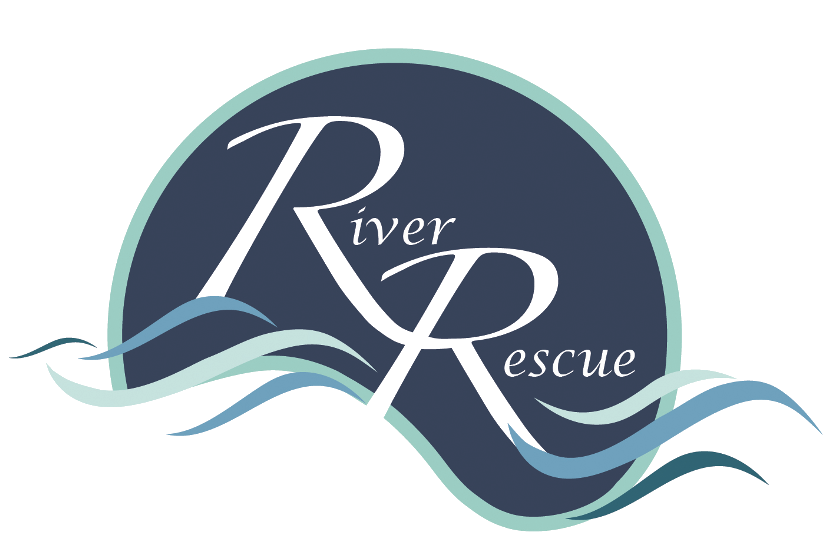29
MARCH, 2025
Cleaning Up Makhanda: Our River Rescue Experience at Scott’s Farm
By: Ethan Ramiah, Tshedza Hope Mabuda, Ziphezinhle Dlomo, Luyanda Siphokazi Seme, Bridgette Mokgohloa

Figure 1: Scott’s Farm river.
The sun rose on Saturday, 15 March 2025, casting a golden glow over Scott’s/Scotch Farm. But beneath the shimmering surface of the nearby river, a less attractive scene lurked. Plastic bottles bobbed lazily in the current, while patches of invasive plants choked the banks, their roots slowly eroding the natural ecosystem. A squad of eco-warriors, the nearby kids, the Honours class and river heroes joined forces to rescue the local river. Despite nearby residents skipping the sweat (shoutout to those who brought refreshing drinks!), our crew, Helen (the founder), Markhan, Naledi, Baxole, and my classmates turned chaos into progress.
Lwandile and Mawande became the kid-whisperers, crafting a fun enviro-squad, teaching little ones the reasons why we were there; having so much fun with them was more than just having fun, it was making them environmentally aware. Ethan and Mlibo became skip champions, hauling trash like Olympians. My squad (Tshedza, Bridget, and Lihle) wrestled stubborn invasive plants and we lost, but hey! we tried.
Group 1 (Luyanda, Sipho, Tshepi, Aleesha) dug out trash hidden under grass and pesky plants, and Group 2 (Zipho, Siviwe, Naledi, Baxole and Markhan) tackled muddy, slippery riverbanks. Result? Within no time, a skip filled with junk that’s been polluting for years; even Helen took a big one out.
For a debut event organized by classmates, this was epic. Did we cover the whole river? No. But our patch was transformed. As Helen said, “Small ripples make big waves.” Just a few hours of work felt like a year’s project. If we had more hands, a lot of great work could be achieved.
Saturday’s clean-up showed how everything is a part of a system. Take Scott’s Farm river as an example: it is heavily polluted, and invasive plants grow rapidly on the riverbanks. Many factors contribute to the current polluted state of the river at Scott’s Farm: as poor municipal waste and water services. Failure to provide these essential services leads the people of Scott’s Farm to dump their waste illegally.

Figure 2: Two members of the class removing litter near the river.
The ‘easiest’ place to dump waste (solid waste, paper, diapers, plastic and clothes) is in the river, so degrading the river’s water quality, and its ability to support aquatic life. Disturbing the river gives invasive plants the chance to grow at an alarming rate!
Scott’s Farm is a good example of a Socio-Ecological System, in that a change in one part of the system causes changes in other parts. For example, the failure of the municipality to provide essential services leads to community members dumping their waste mainly in the river; this illegal dumping degrades the river quality and its ability to support life; a perfect example of a positive feedback loop.
This example highlights the interconnectedness of many aspects that contribute to the issue of Scott’s Farm river. The Scott’s Farm socio-ecological system is complex and adaptive in the sense that each part of the system acts in a manner that cannot be predicted, and it adapts or changes according to how other parts around it change. The community of Scott’s Farm is looking for a positive change, as many children and adults were supportive of the initiative of cleaning the river; it’s just that they are forced to adapt in the manner they do due to poor service delivery by the municipality. The Scott’s Farm river is not just a stream of flowing water, it’s a river that reflects poor leadership skills on the part of the municipality, forced adaptive responses, and how an issue is not simply cause and effect, but it has many aspects contributing to it.
This Saturday experience provided the Environmental Honours class with an overwhelming sense of understanding and respect for what River Rescue does. We had a morning filled with a lot of work in terms of clearing the river; understandably there were some tired faces, but there were also smiling and laughing faces. It was mainly the kids who caused the shift. They added so much life to the clean-up; they made cleaning up seem to be the best fun thing to do in the world, and it changed the mood of many of us.
The experience itself really taught us why we were there: to bring the community more joy and to help create environments that are more friendly to the people and children who love being outdoors. This experience will definitely serve as further motivation to do community projects such as these in the future. Our interactions with the community on the day showed that many community members in the area were very encouraging of what we were doing by the river. Their response really encourages us to communicate with more communities in the river area for our future clean-ups.

Figure 3: Class members and a volunteer rescuing the river
We have become more knowledgeable about how fast areas can become polluted, and so we encourage readers to pick up that odd paper, or bottle, or plastic bag whenever the situation occurs.
We only have one recommendation for River Rescue: continue what you have already been doing, because we have seen first-hand the dangers of polluted rivers, and we have also seen what happens when someone does something about it.
From the Environmental Science Honours Class
Stay Green

Recent Comments